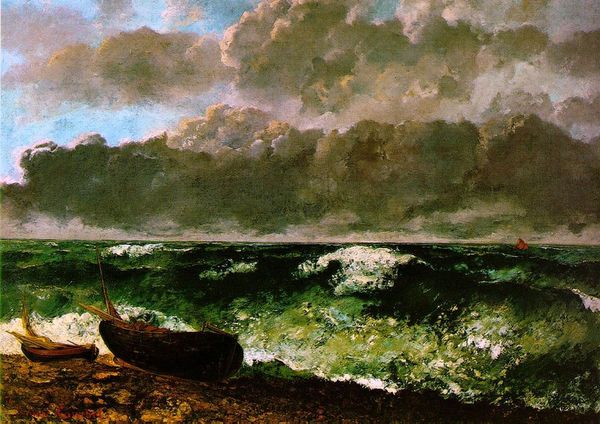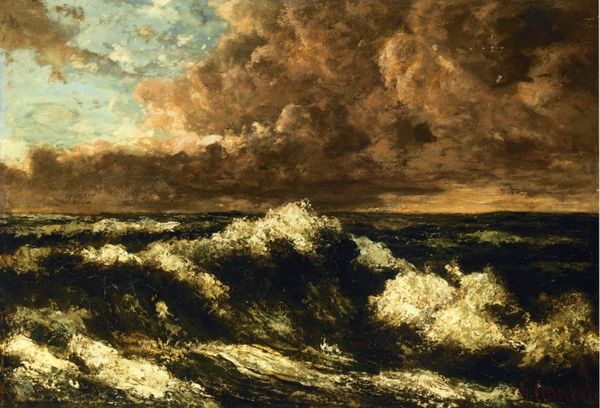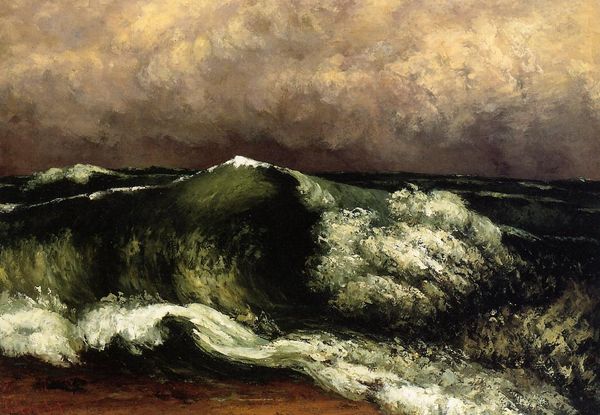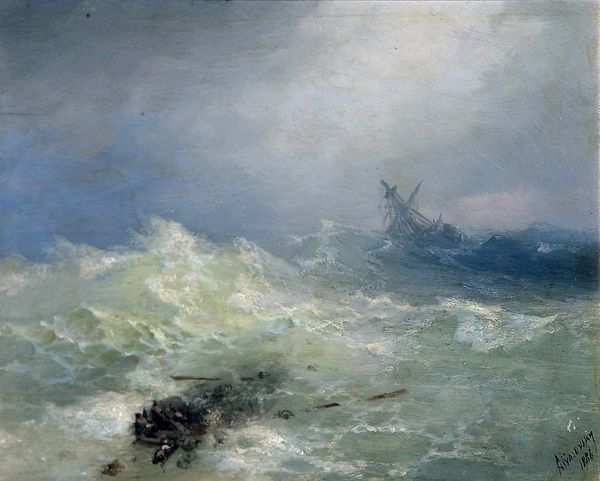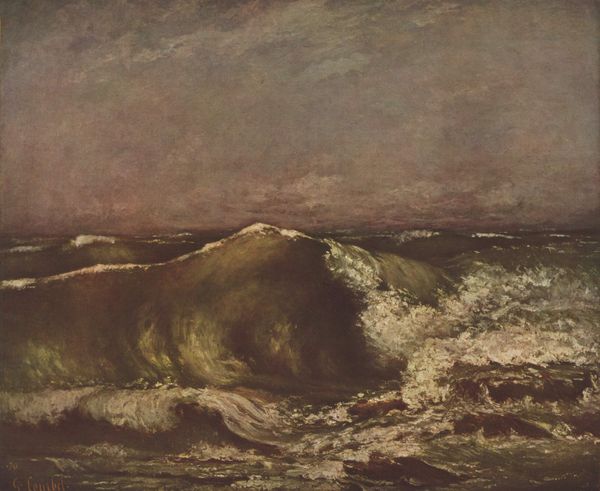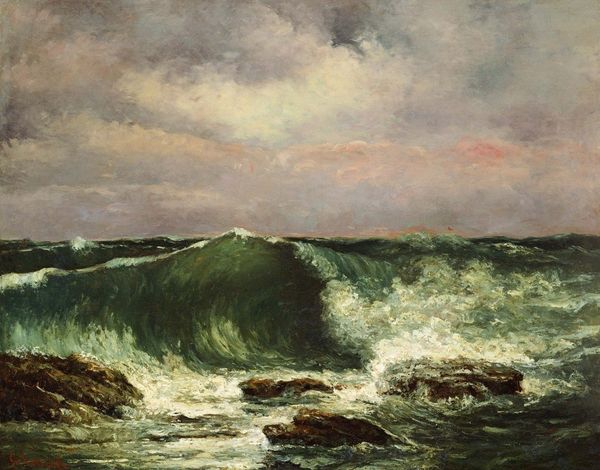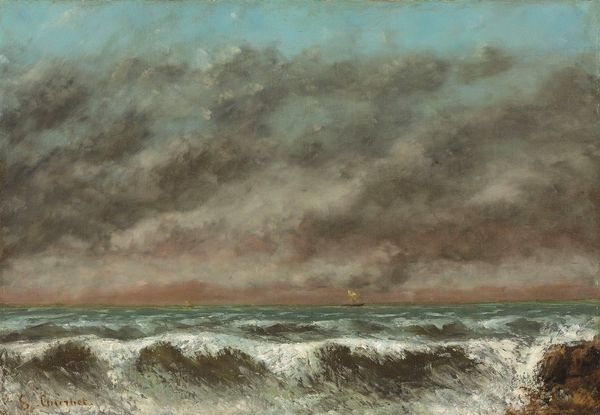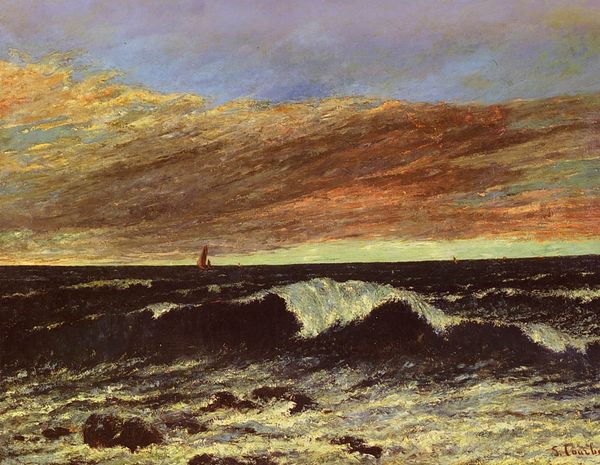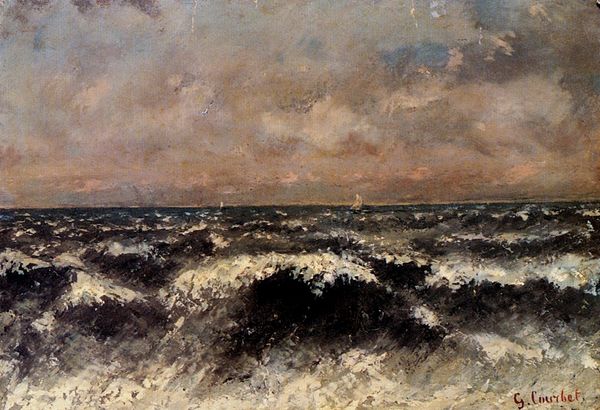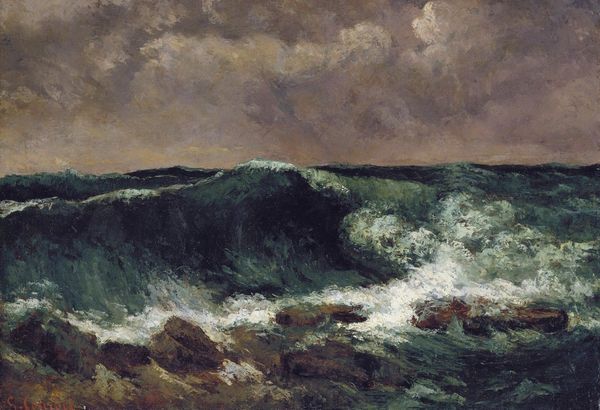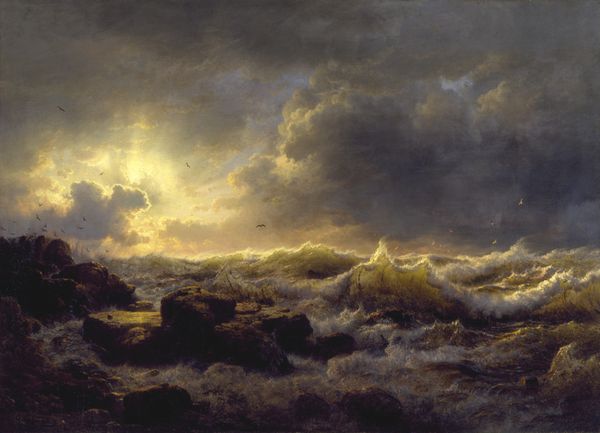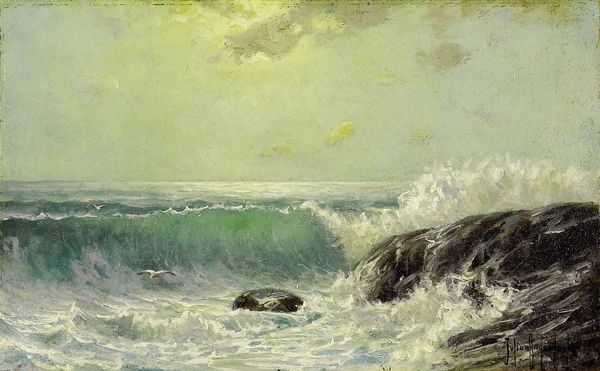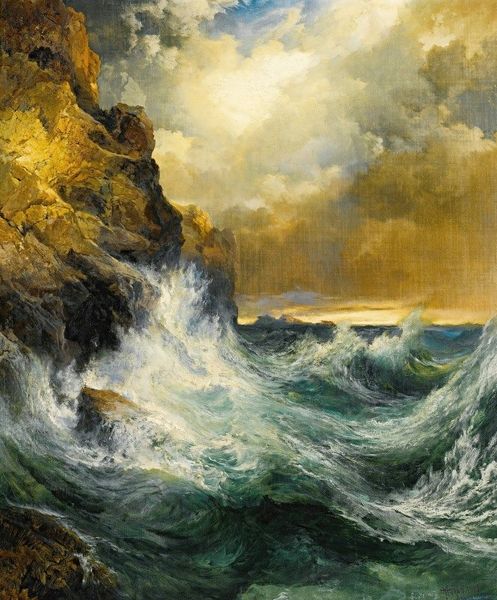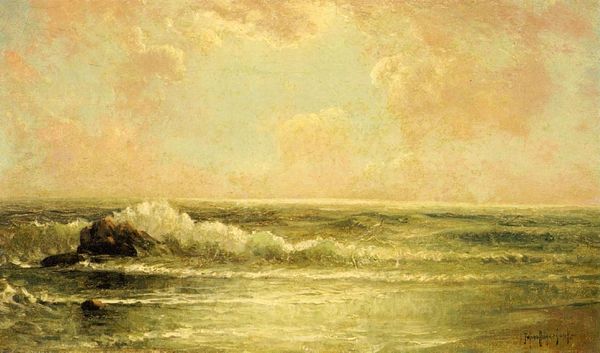
plein-air, oil-paint, impasto
#
boat
#
sky
#
ship
#
plein-air
#
oil-paint
#
landscape
#
impressionist landscape
#
oil painting
#
impasto
#
ocean
#
realism
#
sea
Dimensions: 29.9 x 59.5 cm
Copyright: Public domain
Editor: This is Gustave Courbet's "The Waves," painted in 1869. It’s an oil painting, and what really strikes me is how the heavy impasto seems to physically embody the turbulent sea. What do you see when you look at this painting? Curator: The thick application of paint is, I think, critical to understanding Courbet's intent. Look closely; it's not just about depicting a scene, it's about *making* a scene. The very act of applying the oil paint so heavily, almost sculpting the waves, transforms the sea from a subject to an object, a tangible commodity. Editor: That's interesting. I hadn't thought of it as a commodity, but the labor is visible. Curator: Exactly. And what was the socio-economic role of fishing and maritime activities in 19th century France? Consider the fishermen risking their lives – what sort of tools are they working with, what material comforts did they have? In “The Waves,” is the storm a reflection of social turbulence too? Editor: So you're saying the painting isn’t just a representation of nature, but also a commentary on the labor conditions tied to the sea? Curator: Precisely. It is worth noting the work was done 'en plein air'. Why do you think he chose to paint it in place and on location? Does it challenge the existing class standards of artists creating pieces within their studios? What kind of impact does it have on materiality? Editor: It gives it a raw immediacy, doesn’t it? A connection to the actual physical conditions of the working class! Curator: Yes! Think about what painting outdoors *meant* at that time – the sheer physicality of it, the exposure to the elements. It directly links Courbet to the physical experience of those who worked with the sea. That kind of context really reshapes our interpretation. Editor: This has definitely shifted my perspective. I was focused on the aesthetic, but now I see the work, the materiality and production aspect in a new light. Thanks. Curator: Indeed, reflecting on the 'how' and 'why' behind an artwork's creation can be quite revealing.
Comments
No comments
Be the first to comment and join the conversation on the ultimate creative platform.
